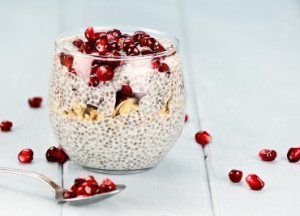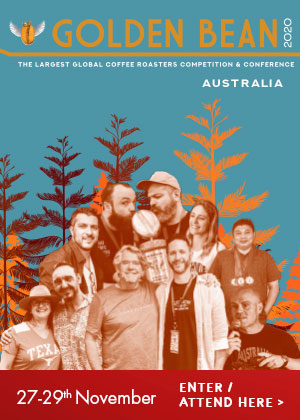Knowing where our food comes from and how it is grown are important public health concerns creating demand from customers for food that is simply better. It is therefore important to distinguish between a food fad and a food trend and understand that both are valuable and both can provide opportunities for café’s to deliver great food experiences for their customers.
Fads and Trends: Following we have compiled a list of health food buzzwords that areout there in the marketplace today – what do they really mean?
The big four:
Gluten Free – Trend
Gluten is a protein found in wheat, rye, barley, triticale and oats. Gluten free food is absolutely non-negotiable for people with Coeliac Disease and many others who have non-Coeliac gluten sensitivity. However, there is a growing number of people who are choosing to eat gluten free to experience better health outcomes for themselves and their families and it is estimated that sales figures for gluten free globally are set to rise to between $4.3 billion and $4.4 billion by 2020.
For people living with Coeliac disease and non-Coeliac gluten sensitivity, their choice of free from foods has never been better. But, magnetic words like gluten free makes consumers think the food is healthier, natural or somehow better for them yet many of the products contain fillers, sugars, fats, artificial colours and preservatives. Marketing and food companies are using the GF symbol on everything, even food that is naturally gluten free.
In a nut shell
As a trend, gluten free will continue to develop over time. It’s what consumers want/need and will increasingly be an active reason for choosing locations to eat and products to purchase.
Superfoods – Fad
The popularity of superfoods has spread, unhindered by unfounded health claims and high prices. While still healthy and beneficial to humans, questions remain about the nutritional value of foods that have earned the “super” status. The term superfood is a catch-all phrase on fruits, vegetables, nuts, seeds and powders containing nutrients our bodies can use.
Often hard to source and more expensive than their counterparts, superfoods offer a range of nutrients and beneficial minerals and vitamins just like any other food. Seasonal greens, vegetables, fruits, dairy and eggs are all good for you foods but we don’t need a label to tell us that.
Food for thought
The marketing of superfoods makes them aspirational foods, creates a sense of exclusivity and most certainly contributes to our negative beliefs around our bodies, what wellness is and how we will not attain good health without these overpriced foods in our pantry.
Non-GMO – Trend
There is a growing awareness and concern about genetically modified organisms and this remains an important issue to consider for anyone in the food industry. Genetic is not a term consumers want to see connected to their food. There is a steady increase in the global market of food being labelled GMO-free or non-GMO. Currently, Australia does not permit the sale of genetically modified fresh foods including fruit and vegetables however some GM modified foods can be used in processed products.
Food matters
GMO-free and non-GMO is not a fad, consumers are demanding greater food transparency, wanting to know what is in their food and how it is grown and processed.
Free From – Trend
“Free From” is a term used to represent food and beverages that have been designed to exclude one or more ingredients beyond gluten free. It’s food that excludes as many allergens as possible whilst maintaining quality, flavour and nutrition. Exclusions include egg, dairy, soy, grains (paleo), sugar, nuts, artificial colours, preservatives & fillers.
Food avoidance is not new, today it is simply a way of life for many people and should no longer be seen as a whim or fad by industry.For some consumers, avoiding certain foods and ingredients is a matter of life and death due to allergies and sensitivities or specific health problems.
The rise of plant based diets and foods has increased the demand for quality free from foods however there remains questions about the quality and nutritional profile of many free from foods. Consumers believe they are buying clean, minimally processed food, crafted from scratch.
And then there’s,
Activated:
Activated foods include sprouted grains, seeds and nuts.
It requires soaking food for up to 24 hours in water and salt. Some foodies believe enzyme inhibitors are deactivated as part of the process. Some starches are converted to simple sugars as part of activation and protein starts to breakdown as part of the process.
Antioxidants:
Are chemicals which occur naturally in foods (or are made in a lab) that may prevent or slow cell damage, oxidative stress.
Some best known antioxidants and their source. Beta-carotene – carrots, sweet potatoes and kale. Vitamin A – egg yolks. Vitamin E – almonds, nuts & some greens. Vitamin C – berries, oranges, kale, parsley and cauliflower. Lutein – spinach. Lycopene – tomatoes, watermelon, papaya.
Fermented:
Cultured food has been around for centuries. Some of the most common include yogurt, sauerkraut, lassi (yoghurt drink), kefir, buttermilk and pickled vegetables.
Fermented foods have been shown to have high counts of probiotics or good bacteria, necessary for gut health.
Low FODMAP:
The Monash team, led by Peter Gibson, provided the first evidence that a Low FODMAP diet improves irritable bowel syndrome (IBS), a disorder which includes symptoms such as abdominal pain or cramping, bloating, gas, diarrhea and/or constipation.
FODMAP –
Fermentable (when the gut changes undigested carbohydrates into gases including methane and hydrogen).
Oligo-saccharides (the process through which gut bacteria degrade undigested carbohydrate to produce gases (hydrogen, methane and carbon dioxide).
Oligo-saccharides (found in wheat, rye, onions, legumes, pulses & garlic).
Disaccharides (lactose found in milk, soft cheese and yoghurt). Mono-saccharide (fructose found in honey and apples).
Polyols (sugars such as sorbitol, mannitol found in some fruit and vegetables and used as artificial sweeteners in commercial food products.
Natural:
There is no enforceable food standards regulating the use of this term in Australia. A product marketed as natural can contain natural colours, maltodextrin, synthetic colours, artificial flavours and hydrolysed proteins, because they all originally derive from a natural ingredient.
Natural peanut butter is a great example – look in any supermarket and you can find “all natural” peanut butter without any additives, preservatives, added sugar, added colour or added fat sitting along-side “made with natural ingredients” peanut butter containing natural flavours, sweeteners and other plant-derived substances.
Organic:
To be certified organic means to grow or manufacture a product free from synthetic pesticides, herbicides, hormones and antibiotics. Livestock must be free range and pasture-fed, seed must be non-GM, and the process must be water efficient and biodiversity friendly. Producers, processors, manufacturers and retailers of food and drink can be certified organic. (source Australian Organic)
Look for certification symbols to confirm that food products are truly certified organic.
Paleo:
Is short for Paleolithic. Paleo attempt to mimic what our hunter-gatherer ancestors ate and includes grass-fed meats, nuts, seeds, eggs, fruits, vegetables, and some oils. Non paleo foods include cereal grains, dairy, legumes, potatoes, processed foods, sugar and some refined oils.
Archeological scientist Christina Warinner discussed the dietary habits of the Paleo man in her TEDTalk, “Debunking the Paleo Diet.” Warinner suggests that the Paleo diet “has no basis in archeological reality.” Suggesting that the diet of our ancestors was diverse, location based and seasonal.
Raw:
Raw is a food lifestyle that believes the most healthful foods are those that are uncooked or cooked at temperatures lower than 48C. It is thought that cooking food breaks down natural enzymes in food, which are needed to assist with digestion and absorption of nutrients.
Sustainable food:
Is the production of food, fiber, or other plant or animal products using techniques that protect the environment, public health, human communities, and animal welfare. It’s a way of food production that generates abundance while ensuring future generations can do the same.
Wholefoods:
Wholefoods are generally plant based foods such as vegetables, fruits, nuts, seeds, eggs, meat, fish, legumes & grains.
The idea of a wholefood lifestyle is to maximise your nutrient intake from natural, unprocessed food sources, avoiding processed and refined foods.
Wholefoods have not been altered from their natural state and won’t generally contain additives like salt, fats & preservatives. An exception to this rule in modern wholefood diets includes dairy products – pasteurisation is considered to be a process that does not affect the nutrients of the food. Wholefood advocates also include other “lightly processed” foods into their diet – coconut oil, coffee, juices, olive oil, maple syrup, vinegars & cacoa.
Cutting through the hype
Marketing and food companies continue to label free from food in ways that lead consumers to believe that products are health giving, nourishing or filled with fantastic ingredients – it can mean the complete opposite – more sugar, more fats, more preservatives, more flavouring, more colouring.
Final thoughts
Consumers are now central to the narrative around food. They are better educated and are expecting and looking for more choice of health giving options. They are most certainly voting with their feet.
Food is now part of the wider health debate for us all.
About the author
Tania is the Founding Director of award winning company Gluten Free Grain Free Pty Ltd & Tania Hubbard Pty Ltd. She is an Australian best-selling free-from author, award winning food manufacturer, food innovator, presenter and educator. Tania is a regular commentator on free-from food, product development, recipe development and food labelling.
Tania Hubbard – The Business of Food
www.taniahubbard.com



















